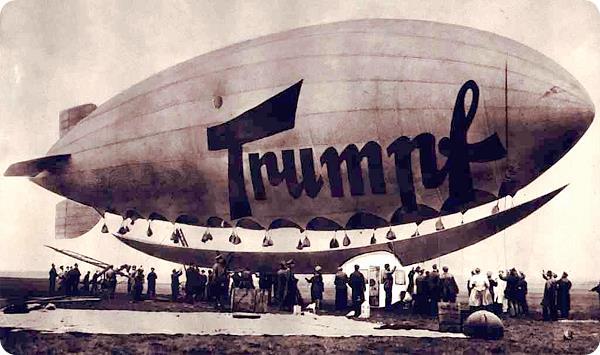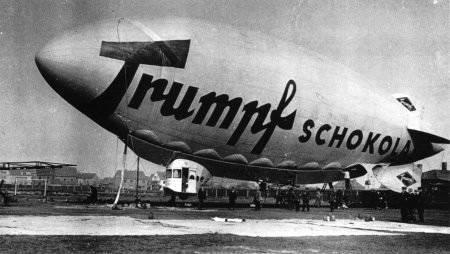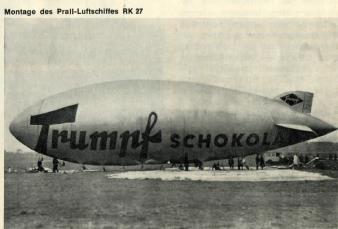| Type |
Semi-rigid airship |
| Engine |
2 Anzani 35 hp |
| Dimensions |
Length 40,4 m, diameter 8,6 m, volume 1440 m3 |
| Weights |
Empty , loaded , max. take off weight |
| Performance |
Max.. speed 80 km/h , cruising speed , range , endurance , service ceiling , climb |
| Type |
Werk.Nr |
Registration |
History |
|
|
D-RK27 |
|



Airship RK 27
Antonius Raab wrote the following about the creation of this airship:
“One day I spoke to two patrons of advertising aviation, Richard and Hans Monheim from the Trumpf chocolate factory, about new possibilities in advertising. We started talking about the airship, which with its dimensions could be suitable for advertising purposes. Before I knew it, I had an order for an advertising airship. I accepted it, but was still thinking about whether this order could be realized quickly.
We, the Raab-Katzenstein aircraft factory, recognized as good aircraft builders, had no experience in airship construction. We therefore hired Professor Parseval from the Technical University of Berlin as a consultant. Zeppelin, Gross and Parseval were the pioneers of the airship. Each of them had been building airships since 1909.
Dr. Eckener. from Zeppelin airship construction, agreed to "lend" us a guide, namely Mr Schiller or Lehmann, for the first flight, which was to take place in April 1928. When we finally had the ship ready, three weeks late, Ekkener telegraphed us off. The Zeppelin was just heading for the USA and all three guides were needed for it. There we were. The ship was ready and there was no guide at hand.
The airship was tugging restlessly on the anchor mast, guarded day and night by two fitters. It was filled to the brim with 2400 m3 of gas and equipped with two engines. The Trumpf chocolate factory was waiting for the start of its advertising campaign. However, we could only receive official approval after completing at least two flawless test flights. The ship RK 27 was the first German small airship.
The approval authority had just as little practical experience with BLIMPS - that was the name given to such small airships, of which there were already several in the USA. - like us. Finally, Katzenstein, Gammelin and I decided, relying on our extensive flying experience, to pilot the ship ourselves.
Dozens of press pilots had been waiting in Kassel for days for the first flight. We studied the literature on the tasks and knowledge of an airship pilot. After we had prepared ourselves thoroughly theoretically, the risk did not seem too great to us, but we were still not entirely comfortable with the matter. But we took the risk.
As experienced pilots of aircraft, we did what we always strictly adhered to, namely to always carry out the first test flight alone and, above all, without the press.
We informed the press that we would take off early at 9 a.m. In reality, we decided to take off at 4 a.m. without the press. I took over the elevator control, engines, gas envelope, Katzenstein rudder, ballast and tow rope, and we took off. It was a 10-minute flight with a smooth landing, and everything was done.
The press was furious about our secret flight, but we promised an official demonstration in the afternoon.
The responsible Berlin ministry, which found out about the impudent flight from the air police, was so astonished by our audacity to simply pilot a ship and even do it well that they sent us a telegram with permission to pilot small airships. "Well, we've never seen anything like that," said the police, "because if they hadn't taken off in secret, we wouldn't have let them fly."
The second takeoff took place in the afternoon, with a passenger, namely one of our partners, Anatole Gobiet, and the first German small airship, built and piloted by laymen, was given its approval for air travel."


